/*
Please refer to readme.html for full Instructions
Text[...]=[title,text]g
Style[...]=[TitleColor,TextColor,TitleBgColor,TextBgColor,TitleBgImag,TextBgImag,TitleTextAlign,TextTextAlign, TitleFontFace, TextFontFace, TipPosition, StickyStyle, TitleFontSize, TextFontSize, Width, Height, BorderSize, PadTextArea, CoordinateX , CoordinateY, TransitionNumber, TransitionDuration, TransparencyLevel ,ShadowType, ShadowColor]
*/
var FiltersEnabled = 0
Style[6]=["#FFFFFF","#000000","#4B4C57","#FFFFFF","","","","","","","","","2","","250","",2,2,10,10,"","","","",""]
Style[5]=["#FFFFCC","#FFFFFF","#4B4C57","#4B4C57","","","","","","","","sticky","","",180,"",2,2,10,10,"","","","",""]
Style[4]=["#FFFFCC","#FFFFFF","#4B4C57","#4B4C57","","","","","","","","sticky","2","",180,"",2,2,10,10,"","","","",""]
Style[2]=["#FFFFFF","#000000","#4B4C57","#FFFFFF","","","","","","","","","2","","250","",2,2,50,-180,"","","","",""]
Style[7]=["#FFFFFF","#FFFFFF","#4B4C57","#4B4C57","","","","","","","float","sticky","2","",180,"",2,2,600,200,"","","","",""]
Style[3]=["#FFFFFF","#000000","#4B4C57","#FFFFFF","","","","","","","","","2","","100","100",2,2,10,10,"","","","",""]
Style[8]=["#FFFFFF","#000000","#4B4C57","#FFFFFF","","","","","","","","","2","","200","",2,2,10,10,"","","","",""]
Text[1]=["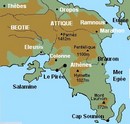
Attic","- Overview
- Some dates
- Archaeological sites
- Pottery and ceramics"]
Text[11]=["Athens","
Athens! The most prestigious sites of the western world : a worthwile trip.
Google Earth (Acropole):
37º58’07.48”N
23º43’34.16”E"]
Text[12]=["Brauron","
The sanctuary of Artemis. The museum shelters the statues of the little bears (young dancers).
Google Earth (entrée):
37º55’28.31”N
23º59’49,17”E"]
Text[13]=["Piraeus","

The Athena from Piraeus. Google Earth:
37º56’07.56”N
23º38’43.46”E"]
Text[14]=["Cape Sounion","
The temple of Poseidon.
Google Earth :
37º39’06.91”N
24º01’35.47”E"]
Text[15]=["Marathon","
The tumulus of the Athenians.
Google Earth:
38º07’04.86”N
23º58’42.22”E"]
Text[16]=["Oropos","
The Amphiaraion of Oropos.
Google Earth (entrée):
38º17’23.16”N
23º50’41.23”E"]
Text[17]=["Ramnous","
The antik Rhamnontes.
Google Earth (entrée):
38º13’02.01”N
24º01’37.70”E"]
Text[18]=["Eleusis","
The site of Eleusis mysteries...
Google Earth (entrée):
38º02’26.80”N
23º32’17.54”E"]
Text[2]=["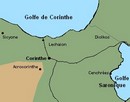
Corinth","- Overview
- Some dates
- Archaeological sites
- Pottery and ceramics"]
Text[21]=["Corinth","
Corinth, one of the major sites of ancient Greece.
Google Earth (entrée) :
37º54’24.09”N
22º52’48.07”E"]
Text[22]=["Acrocorinth","
The upper city which sheltered the temple of Aphroditis.
Google Earth (entrée):
37º53’23.73”N
22º52’04.39”E"]
Text[23]=["Sicyone","
An unfortunately almost unknown site that deserve noticing. Google Earth (car park) :
37º59’03.54”N
22º42’48.22”E"]
Text[3]=["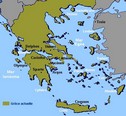
GREECE","- Overview
- Some dates
- Archaeological sites"]
Text[31]=["Philippi","
The city founded by Philippe II in 356 B.C.
Google Earth (entrance):
41º00’43.90”N
24º17’19.38”E"]
Text[32]=["Thessaloniki","
Archaeological museum: Makedonia, from the archaic period to late Roman.
Google Earth (Museum):
40º37’31.06”N
22º57’12.58”E"]
Text[33]=["Pella","
The capital of Macedonian kings.
Google Earth (Entrance):
40º45’13.30”N
22º31’04.81”E"]
Text[34]=["Lefkadia","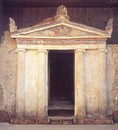
Three superb Macedonian tombs to visit. A few kilometers away, Mieza, the place of Aristoteles school.
Google Earth (Entrance):
40º39’14.88”N
22º08’10.41”E"]
Text[35]=["Vergina","
Unique: the wonders from Philippe II's tomb.
Google Earth :
40º29’14.71”N
22º19’13.86”E"]
Text[36]=["Museum of Ioannina","
Archaeological museum of Epira, finds from the site of Dodoni.
Google Earth :
39º39’59.91”N
20º51’21.82”E"]
Text[37]=["Dodoni","
An imposing site among the oldest ones. The sanctuary of Zeus and Dione. Its theatre with 17000 seats.
Google Earth (Entrance):
39º32’45.52”N
20º47’05.34”E"]
Text[38]=["Byzantium","
Visite the archaeological museum of Istanbul...
Google Earth (Musée):
41º00’42.00”N
28º58’53.00”E"]
Text[40]=["Troy","
Nine successive cities are piled up on the hill of Hissarlik.
Google Earth :
39º57’26.80”N
26º14’25.52”E"]
Text[41]=["Pergama","
The Hellenistic capital of Attalides with, where parchment was invented.
Google Earth :
39º07’53.66”N
27º11’04.85”E"]
Text[42]=["Ephesus","
A large ancient port, 1500 years of history, and the place of the temple of Artemis.
Google Earth (Entrance):
37º56’28.48”N
27º20’31.08”E"]
Text[43]=["Miletus","
An ancient port and a powerful Greek city, whose people spread around the Black sea and Marmara Sea.
Google Earth (Acropolis):
34º31’47.76”N
27º16’30.13”E"]
Text[44]=["Priene","
A flourishing city of the Ionian league, destroyed by Persia in 494 B.C.
Google Earth :
37º39’33.22”N
27º17’50.17”E"]
Text[46]=["Didyme","
The sanctuary of Apollo, 19 km south of Milet.
Google Earth (Acropolis):
37º23’01.20”N
27º15’24.04”E"]
Text[47]=["Aphrodisias","
Sanctuary of Aphroditis, the capital of Caria which became also a center of philosophy and sculpture.
Google Earth:
37º42’31.33”N
28º43’29.69”E"]
Text[48]=["Kos","
Do not miss the Asclepion, particularly imposing. Hippocrate’s island.
Google Earth :
36º52’30.51”N
27º15’26.90”E"]
Text[49]=["Rhodes","
The town of Saint-John’s knights. Nothing remains from the Colossus, but the museum is a high point of archaeology.
Google Earth (Museum):
36º26’40.98”N
28º13’36.26”E"]
Text[50]=["Lindos","
Dominated by 125m high rock: on the top of this acropolis, the sanctuary of Athena Lindia, 4th century B.C.
Google Earth (Acropolis):
36º05’37.76”N
28º05’30.63”E"]
Text[51]=["Kato Zakros","
Like Cnossos, Malia and Phaestos, the palace was built towards 1700-1650 B.C., was damaged probably by an earthquake, and then rebuilt then finally destroyed towards 1400 B.C.
Google Earth (Acropolis):
35º05’51.73”N
26º15’41.50”E"]
Text[52]=["Gournia","
Very few remains from this Minoan city… but it’s an important site, since the only one of this kind (1550-1450 B.C.).
Google Earth:
35º06’31.87”N
25º47’34.66”E"]
Text[53]=["Malia","
One of the four large palaces from the center of the Minoan civilization.
Google Earth:
35º17’34.62”N
25º29’36.37”E"]
Text[54]=["Cnossos","
A must ! The largest - and best known - Minoan site. The palate of king Minos…
Google Earth (Entrance):
35º17’53.24”N
25º09’41.04”E"]
Text[55]=["Gortyne","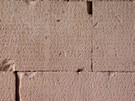
A Greek, then Roman city in Crete. On a wall, the well-known code of law (480-460 B.C.)
Google Earth:
35º03’43.00”N
24º56’49.17”E"]
Text[56]=["Phaestos","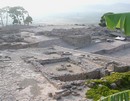
One of the most important sites of Minoan civilization. An imposing palace.
Google Earth:
35º03’03.38”N
24º48’48.85”E"]
Text[57]=["Delos","
The sanctuary of Apollo, but also a city and an economic and politic power. A well preserved site.
Google Earth:
37º23’57.00”N
25º15’56.76”E"]
Text[58]=["Paros","
In the center of Cyclades, traversed by all Aegean civilizations, a pillar of ancient Greece.
Google Earth (Museum):
37º05’04.29”N
25º09’09.82”E"]
Text[59]=["Naxos","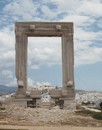
Like its rival Paros, Naxos was in the center of the currents of aegean, cycladic, minoan and mycenian civilizations and an economic and political power of ancient Greece.
Google Earth :
37º06’31.60”N
25º22’22.67”E"]
Text[60]=["Akrotiri","
The minoan Pompei, buried by the volcanic eruption of Santorin towards 1645 B.C.
Google Earth:
36º21’04.58”N
25º24’11.80”E"]
Text[61]=["Fira","
The new museum at Fira (ou Thera) displays now the frecoes and finds from the site of Akrotiri, buried by the volcanic eruption of Santorin
Google Earth:
36º23’13.35”N
25º25’49.80”E"]
Text[65]=["Delphi","
Among the greatest sites of all ancient Greece. The sanctuary of Apollo, the oracle, the prestigious delphic games… impossible to circumvent ! The museum has been recently rebuilt.
Google Earth:
38º28’56.35”N
22º30’02.71”E"]
Text[66]=["Heraion","
A nice site on the seashore.
Google Earth:
38º01’41.37”N
22º51’08.25”E"]
Text[69]=["Nemea","
A legendary Greek site but unfortunately ignored. Games took place since 573 B.C. in the sanctuary of Zeus.
Google Earth:
37º48’32.80”N
22º42’35.60”E"]
Text[70]=["Epidavros","
A major site : the great ancient medical centre, the sanctuary of Asclépios. Several temples, a stadium and especially the theatre with 14000 seats.
Google Earth:
37º35’47.65”N
23º04’31.60”E"]
Text[71]=["Aegina","
A pioneer city of the Greek navy and trade (with the oldest Greek coins). The temple of Aphaia, one of the jewels of Greece.
Google Earth:
37º45’16.00”N
23º31’59.20”E"]
Text[72]=["Mykines","
The center of mycenian civilization (1550-1100 B.C.). The ruins of the city, the circle of graves, Tolos tombs. Visit the new museum built in 2007.
Google Earth (Entrance):
37º43’48.00”N
22º45’15.40”E"]
Text[73]=["Argos","
Several sites and a museum in the large agricultural borough of Argos: mycenian walls, temples, theatre, roman baths.
Google Earth :
37º37’53.60”N
22º43’11.00”E"]
Text[74]=["Thyrinth","
The acropolis and its mycenian walls. Much less visitors than in Mykines, though an impressive site.
Google Earth :
37º36’00.30”N
22º47’58.00”E"]
Text[75]=["Bassae","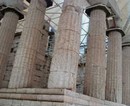
Far from touristic roads, one of the largest Greek temples where different styles are curiously mixed. Currently protected under a tent and waiting to be restored.
Google Earth :
37º25’46.70”N
21º54’02.00”E"]
Text[76]=["Olympia","
The legendary site, carried by the reputation of its temples (Olympian Zeus…) and of the Olympic Games. The museum, as fascinating as the site itself.
Google Earth :
37º38’25.00”N
21º37’41.00”E"]
Text[77]=["Pylos","
Very few remains from the mycenian palace known as Nestor’s. In the neighbourhood, some Tolos tombs
Google Earth :
37º02’45.00”N
21º42’19.30”E"]
Text[78]=["Museum of Heraklion","
THE place where the wonders of the Minoan palaces are displayed - objects and frescos.
Google Earth :
35º20’20.50”N
25º08’13.60”E"]
Text[79]=["Kostas Kotsanas Museums","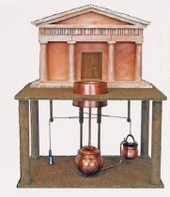
Unique: the Museum of ancient Greek Technology and the Museum of ancient greek musical instruments and toys: modern but operating reconstructions of 300 machines, mechanisms, inventions, instruments and toys. Amazing.
Google Earth :
37º38’60”N
21º19’00”E"]
Text[80]=["Vathy","
A nice archaeological museum display mainly the founds from the excavations at the Heraion (near Pythagoreio)
Google Earth:
35º45’16”N
26º58’43”E"]
Text[81]=["Pythagoreio","
Many archaeological remains are to be seen at the ancient capital of Samos, where Pythagoras was born: the tunnel of Eupalinos and, close to the airport, the Heraion. A small museum opened in 2010 on a roman site, in town.
Google Earth (Tunnel):
37º41’41”N
26º55’49”E"]
Text[101]=["Cumae","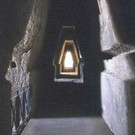
The archaeological park of the ancient Cumae the cave of Sybille. The finds from the excavations are in Naples.
Google Earth :
40º50’31”N
14º03’21”E"]
Text[102]=["Temples of Paestum","
The superb site of Magna Graecia, that must be visited in continental Italy - as well as its museum.
Google Earth :
40º25’24”N
15º00’19”E"]
Text[103]=["Segest","
A very beautiful temple lost in the mountain. Theatre nearby.
Google Earth :
37º56’30”N
12º49’57”E"]
Text[104]=["Selinonte","
An impressing group of greek temples.
Google Earth :
37º35’11.65”N
12º50’06”E"]
Text[105]=["Agrigentum","
Another site which is a must: the lane of the Greek temples from Akragas, founded in 581 B.C. by citizens from Gela. A remarkable museum.
Google Earth (entrance) :
37º17’26”N
13º35’09”E"]
Text[106]=["Syracuse","
The Theatre, but also of the vestiges spread all through the city (Cathedral, fountain of Arethusa…)
Google Earth (theatre) :
37º04’33”N
15º16’31”E"]
Text[107]=["Gela","
The acropolis of the ancient city founded in 688 B.C. Interesting museum.
Google Earth (museum):
37º03’49”N
14º15’27.80”E"]
Text[108]=["Foggia","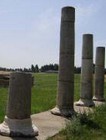
The archaeological park of Daunia - some daunians ruins in Ascoli Satriano
Google Earth :
41º11’58”N
15º33’46”E"]
Text[109]=["Canosa","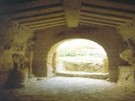
Some vestiges of ancient Canosa. Visit also the Museo Civico.
Google Earth (museum):
41º13’34”N
16º03’42”E"]
Text[110]=["Gnathia","
The archaeological park of Egnazia in Fasano. Museum.
Google Earth :
40º53’16”N
17º23’28”E"]
Text[111]=["Taranto","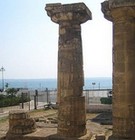
Many sites in the city. Important museum. Archaeological park in Saturo.
Google Earth :
40º28’26”N
17º14’20”E"]
Text[201]=["Felsina (Bologna)","Museo Civico Archeologico di Bologna (finds from the necropoles of Felsina)."]
Text[202]=["Adria","Museo Archeologico Nazionale di Adria (local Etruscan finds)."]
Text[203]=["Arretium (Arezzo)","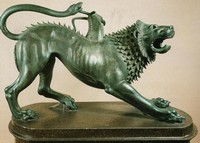
The Arrezzo Chimera
- Museo Archeologico Mecenate (Bucchero, bronzes, vases from Arezzo).
- Etruscan walls ruins"]
Text[204]=["Bieda (Blera)","Necropolis, tombs with architectural front, Etruscan bridge on Biedano. Vestiges of walls."]
Text[205]=["Volsinii (Bolsena)","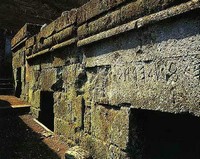
Tombs, walls, ruins of temple."]
Text[206]=["Bomarzo","Vestiges of walls, drainage channels, tombs (Grotta dipinta, Grotta beyond Colonna). "]
Text[208]=["Campeva (Capua)","Museo Campano (terracotta from Campania)"]
Text[209]=["Succivo","Museo archeologico dell' Antica Atella."]
Text[210]=["Caere (Cerveteri,Caisra)","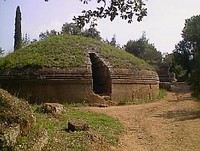
- Etruscan National museum, the richest collection of the world in Etruscan art. - Necropolis (tumuli, tomb from Regolini-Galassi, Banditaccia and Monte Abetone). Reliefs tomb, Cornice tomb, Hut tomb, the Greek Vases tomb, Capitals tomb."]
Text[211]=["Chianciano Terme","Etrusco Museo Archeologico Delle Acque"]
Text[212]=["Clevsin (Chiusi, Clusium)","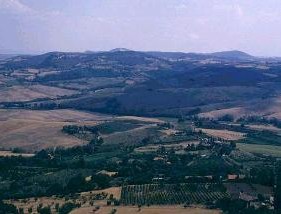
- Museo Archeologico Nazionale (Bucchero, painted vases, bronzes). - Tomb of the monkey, of the Hill, of the Pelerine, of the lion…"]
Text[213]=["Curtun (Cortone)","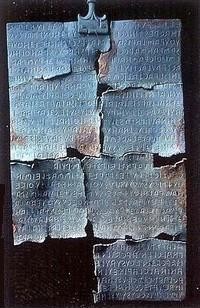
The Tabula Cortonensis - Museo dell' Accademia Etrusca E della città di Cortona
- Tombs: di Pitagora, del Sodo, Sergardi (Melone di Camuscia)."]
Text[214]=["Ferrare","Museo Archeologico Nazionale (finds from Spina)."]
Text[215]=["Foesulae (Fiesole)","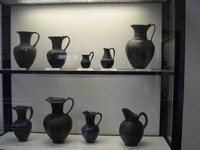
- Museo Archeologico: etruscan and roman finds
- Ruin of etruscan temple."]
Text[216]=["Firenze","Museo Archeologico. Important collection of Etruscan potteries. The Franç&ois vase; bronzes, jewels, coins."]
Text[217]=["Fratte","Parco archeologico Etrusco-sannitica di Fratte."]
Text[218]=["Grosseto","Archaeological Etruscan parc. Gathers 11 sites scaterred over the Grossetto area, linked by an interactive informations and virtual reconstitutions network. Museo Archeologico (finds from Rosella and Vetulonia). "]
Text[219]=["Manthva (Mantua)","Museo Archeologico (Etruscan antiquities) "]
Text[220]=["Forcello di Bagnolo San Vito","Parco Archeologico del Forcello."]
Text[221]=["Misa (Marzabotto)"," - Museo Nazionale Etrusco Pompeo Aria.
- two necropoles, vestiges of temple."]
Text[222]=["Massa Marittima","- - Museo archeologico, palazzo del podestà
- Parco archeologico del Lago dell' Accesa."]
Text[224]=["Murlo","Museo Etrusco Antiquarium di Poggio Civitate."]
Text[225]=["Norchia","Necropolis, tombs with architectural front "]
Text[226]=["Velsu (Orvieto)"," - Temple of the Belvedere, Etruscan wells, necropoles of Crocifisso del tufo, Cannicella and Golini tombs decorated with frescoes. Nearby, necropoles of Castel Rubello - Museo Civico in Palazzo Faina: sculptures, vases, bronzes, frescoes."]
Text[228]=["Perusia (Perugia)","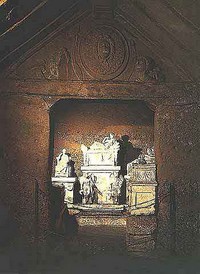
The Tomb of the Reliefs
- Museo Archeologico Nazionale dell' Umbria (cinerary urns, bronzes, vases, bucchero, an exceptional collection). - Necropolis of Palazzone, hypogee of San Manno and the Volumni, gate of Mars."]
Text[229]=["Fufluna (Populonia)","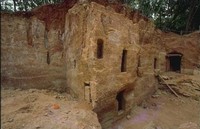
- Walls of the acropolis, necropolis of Oporto Baratti, tombs with tumulus.
- Parco archeologico di Baratti E Populonia."]
Text[230]=["Rome","- - Museo Nazionale Di Villa Giulia (the gold blades of Pyrgi). Etruscan bronzes and terracottas, painted vases. Finds from of the tombs Barberini and Bernardini de Palestrina (Praeneste), finds from Cerveteri, Veies, etc.
- Museo Capitolino: finds from Caere.
- Museo Baracco: Greek, Egyptian, Assyrian, and Etruscan collection. Sculptures. - Museo Etrusco Gregoriano (Vaticano) "]
Text[231]=["Rusellae (Rosella)","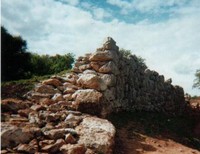
Vestiges of city walls, necropolis. The finds are in the museum of Grosseto."]
Text[232]=["Santa Marinella","Center of Santa Severa, Etruscan and roman archaeological sites."]
Text[233]=["Santa Maria Capua Vetere","Museo Archeologico dell' Antica Capua."]
Text[234]=["Siena","Museo Archeologico Nazionale Etrusco di Siena"]
Text[235]=["Suana (Sovana)","Parco archeologico del tufo. Etruscan necropolis, tombs with architectural front."]
Text[236]=["Spina","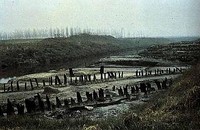
Etruscan necropoles. The finds are displayed at the National Archaeological Museum of Ferrare."]
Text[237]=["Sutrium (Sutri)","Tombs, vestiges of walls and irrigation channels, etrusco-roman amphitheatre."]
Text[238]=["Tarchna (Tarquinia)","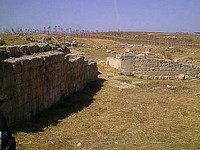
Gate on the Decumanus
- Museo Archeologico Nazionale di Tarquinia. A unique collection of Etruscan and Greek art.
- ruins of city walls - well tombs and many painted tombs. Necropolis of Montarozzi. Tomb of the Leopards, of the Omen, of the Triclinium, of the Jugglers, of the Lionesses, of Hunting and Fishing, tomb of the bulls, of the Olympiads. In the archaic tomb of the Warrior was discovered a complete bronzes furniture, an armour, weapons and shield.
- On the hill Pian della Civita, ruins of the temple says Queen’s altar."]
Text[239]=["Tuter (Todi)","Museo Civico (jewels, bronzes, terracottas, coins)."]
Text[240]=["Tuscania","- Necropolis: tomb of Grotta della Regina with many underground corridors, tomb of Carcarello, of the Television.
- Small museum with sarcophagi. "]
Text[241]=["Veies (Veio)","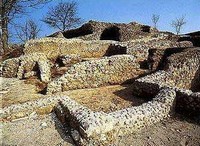
Two painted tombs (Campana cave and tomb of the ducks). The famous statue of the Apollo of Veies is kept in the Etruscan museum of Giulia Villa, in Rome."]
Text[242]=["Vetluna (Vetulonia)","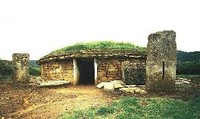
Vestiges of the walls. Tombs with tumulus (of Petrera, of the little devil)."]
Text[243]=["Viterbo","Museo Civico (sarcophagi, inscriptions. Nearby : etruscan bridge nearby (Ponte del Castello) and ruins of the Etruscan cities of San Giovenale and Acquarossa."]
Text[244]=["Velzna (Volsinies)","
Vestiges of the walls with inscribed names of the etruscan stone masons."]
Text[245]=["Velathri (Volterra)","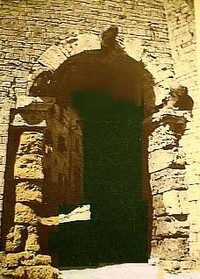
Porto all'Arco
- Museo Etrusco Guarnacci: more than 600 funeral urns, very important collections of Etruscan art.
Ruins of walls and temples, Arc gate and Diana’s gate."]
Text[246]=["Velch (Vulci)","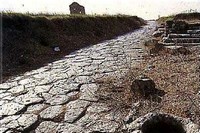
Paved road
- National museum of Vulci, in the Castle of Badia.
- Parco archeologico di Vulci: the Etruscan necropolis.
- Important Tombs such that of the Sun and the Moon which count up to eight rooms ; tomb with tumulus of Cuccumella. Tomb François"]
Text[4]=["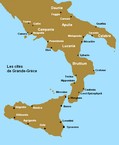
MAGNA GRAECIA","- Overview
- Archaeological sites"]
Text[5]=["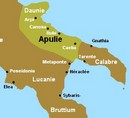
Apulia","- Overview
- Some dates
- Archaeological sites
- Pottery and ceramics"]
Text[6]=["
Campania","- Overview
- Some dates
- Archaeological sites
- Pottery and ceramics"]
Text[7]=["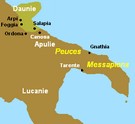
Daunia","- Overview
- Some dates
- Archaeological sites
- Pottery and ceramics"]
Text[8]=["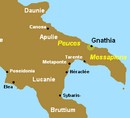
Gnathia","- Overview
- Some dates
- Archaeological sites
- Pottery and ceramics"]
Text[9]=["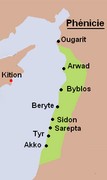
Phoenicia","- Overview
- Some dates
- Archaeological sites
- Arts and ceramics
- Coinage"]
Text[901]=["Byblos","Obelisks from the temple built by Abichemou, king of Byblos, 19th century B.C.
34º07’08”N
35º38’50”E
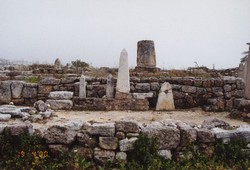
Photo by Galen R. Frysinger"]
Text[902]=["Sidon","Temple of Echmoun - throne of Astarte
33º35’09”N
35º23’55”E
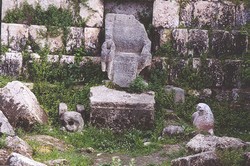
Photo by Galen R. Frysinger"]
Text[99]=["",""]
Text[100]=["",""]
applyCssFilter()




























































































